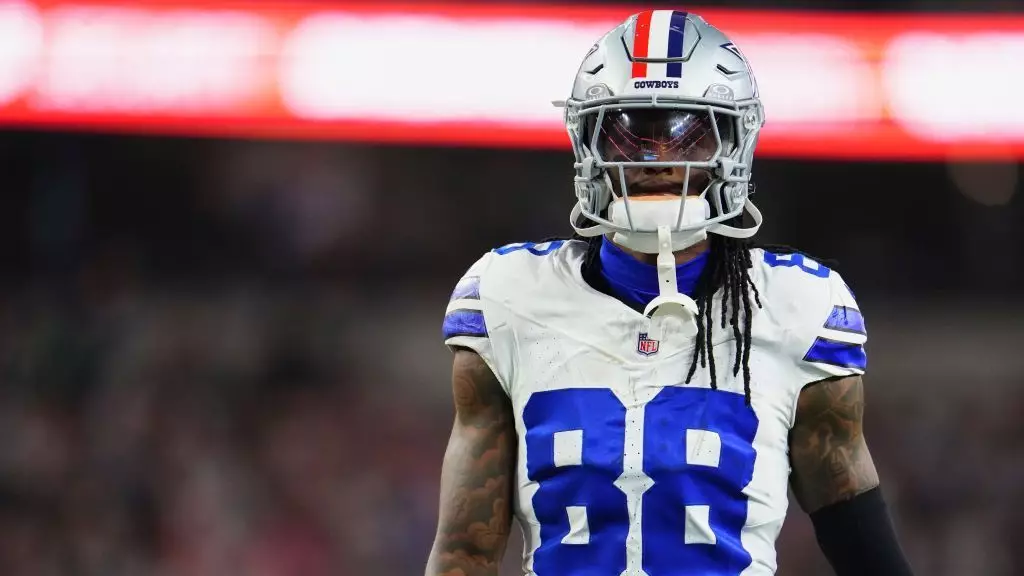In what should have been a pivotal matchup at AT&T Stadium, the Dallas Cowboys faced off against their long-standing rivals, the Philadelphia Eagles. Expectations were high, but what transpired was a disappointing 34-6 rout that left fans bewildered. Among the many factors contributing to this lopsided defeat, an often-overlooked issue came to the forefront—sunlight glaring down on key moments of the game. It’s a nuance that, despite its seemingly trivial nature, managed to overshadow the highlights of an already forgettable outing.
As the Cowboys struggled to establish momentum, the situation became dire during the second quarter. After narrowly trailing 7-3, the team found themselves with a golden opportunity to take the lead. The window was wide open: quarterback Cooper Rush had a clear passing lane to CeeDee Lamb, positioned ideally in the end zone. However, in a cruel twist of fate, Lamb was unable to locate the ball, blinded by the unforgiving Texas sun. This unfortunate missed connection resulted in a mere field goal, setting the stage for a stark second-half decline where the Cowboys would not score again.
The Owner’s Frustration: A Call for Change
After the disheartening game, Cowboys owner and general manager Jerry Jones faced the media, visibly grappling with questions that seemed inconsequential compared to the overarching disappointment of the loss. Yet, Jones took it upon himself to highlight the glaring issue of sunlight at AT&T Stadium. “We do know where the damn sun’s going to be at our own stadium,” he declared, his tone a mix of frustration and incredulity.
His response shed light on a much-discussed but rarely resolved dilemma in sports: management of environmental conditions. Jones’s retort about tearing down the $1.2 billion stadium in search of a quick fix didn’t resonate well, as it underlined a level of deflection from what many fans and players see as a legitimate concern. The Cowboys have historically employed temporary curtains for various events held at the stadium, raising the question of why something so simple was neglected when it comes to the game itself.
It’s worth noting that the Cowboys do not regularly practice at AT&T Stadium, which could contribute to their inability to adapt their game plan to the unique trials of their home turf. For head coach Mike McCarthy, the question looms: should adjustments be made considering the sun’s positioning during late afternoon games? While it’s easy to dismiss weather conditions as mere excuses, they often play a significant role in high-stakes environments, dictating strategy and execution alike.
Rush himself seemed unaware of the sunlight’s effect, initially unsure if Lamb was the intended recipient of his throw. “I threw and got hit. I didn’t see what happened. I heard it was the sun,” Rush shared. This moment encapsulated a broader theme—one of confusion and miscommunication that can arise in the heat of competition. Television replays captured Lamb’s frustrated signal, indicating that he had lost sight of the ball, leading to speculation on whether he would advocate for implementing some sort of solution.
Ultimately, the spectacle wasn’t just about football; it raised questions about how organizations adapt to predictable adversities. While the Cowboys offer a certain charm with their rich history and dedicated fanbase, this incident underscored an important reality for all sports teams: environmental factors must be addressed with the same urgency as player trades or strategies.
As Jones succinctly put it, every team faces these issues, suggesting a broader understanding that could lead to cooperative solutions within professional sports. If the Cowboys and other organizations can learn to forecast and counteract factors like sun glare, it could significantly improve the game experience for players and fans alike.
While the scoreboard ultimately defined the day, it was the convergence of environment and execution that truly symbolized the Cowboys’ struggles. Addressing such issues may seem trivial, but in the grand scheme of competitive sports, they can often mean the difference between triumph and defeat. It’s high time for franchises to adapt to their surroundings, ensuring that external elements don’t eclipse the thrill of the game.

Leave a Reply